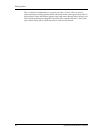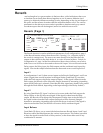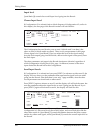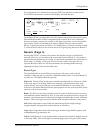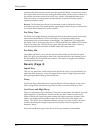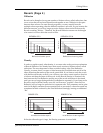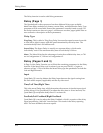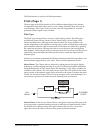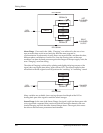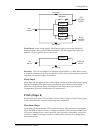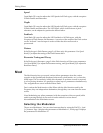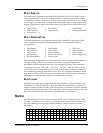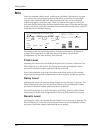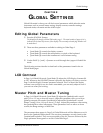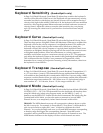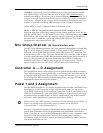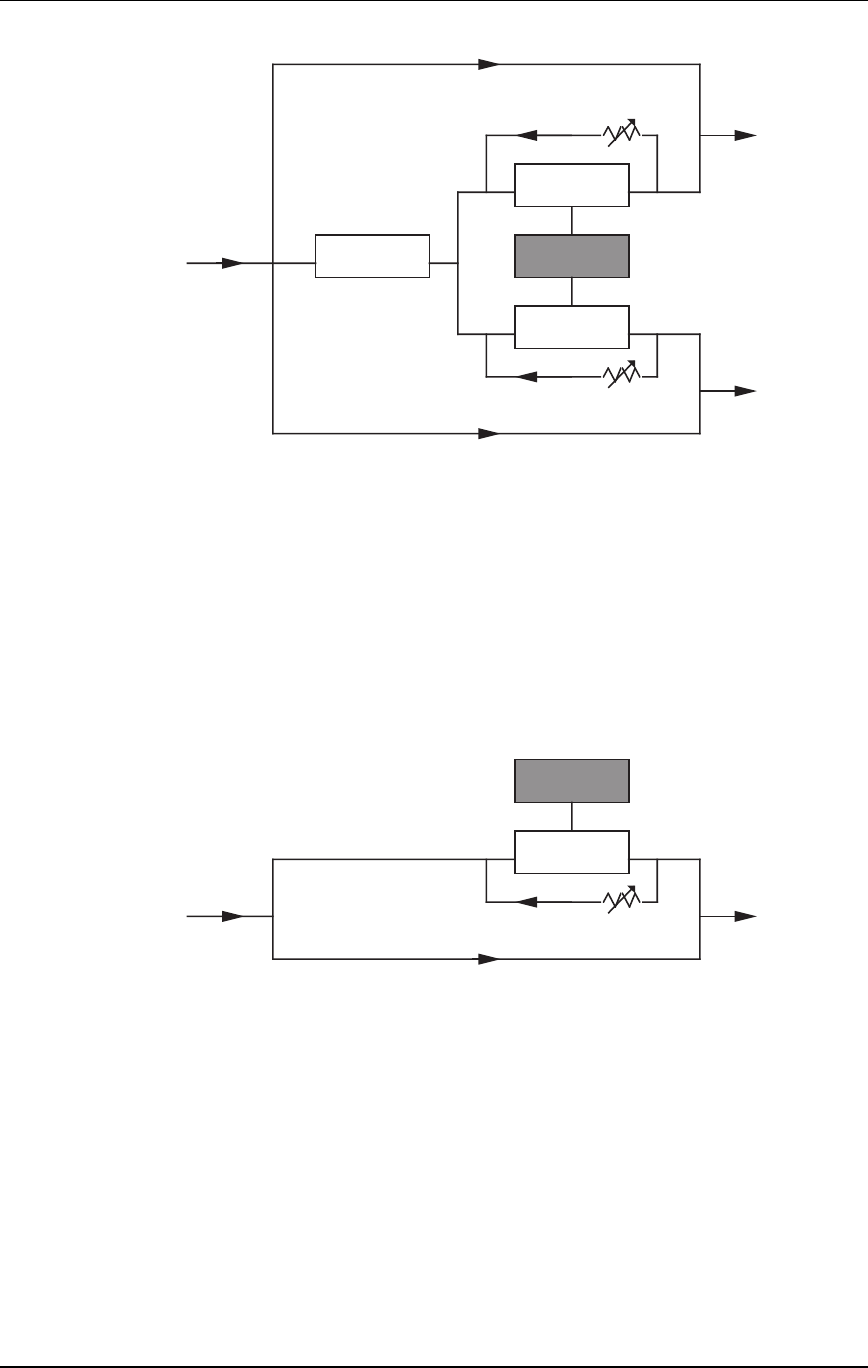
Editing Effects
106 QuadraSynth Reference Manual
LFO
DETUNE
DELAY
DRY
SIGNAL
RIGHT
CHORUSED
OUTPUT
FEEDBACK
DETUNE
FEEDBACK
DRY SIGNAL
DRY SIGNAL
LEFT
CHORUSED
OUTPUT
Mono Flange. First used in the 1960s, ÒFlangingÓ was achieved by the use of two
tape recorders that would record and play back the same program in
synchronization. By alternately slowing down one tape machine, and then the other,
different phase cancellations would occur. Since the slowing down of the tape
machines was done by hand pressure against the flanges of the tape supply reels, the
term ÒFlangingÓ came into being.
The effect of Flanging is achieved by splitting and slightly delaying one part of the
signal, then varying the time delay, again with an LFO. The delayed signal is then
mixed back with the original sound to produce the ÒswishingÓ or ÒtunnelingÓ sound.
LFO
DELAY
DRY
SIGNAL
FLANGED
OUTPUT
FEEDBACK
DRY SIGNAL
Many variables are available, from varying the speed and depth of the LFO to
feeding back part of the signal to make the effect stronger.
Stereo Flange. In the case of the Stereo Flange, the signal is split into three parts with
a dry signal and a separate Delay section for both left and right channels with one
channel flanging up while the other channel flanges down. Once again, this causes
the effect to become more pronounced and dramatic.



